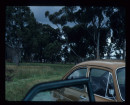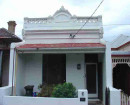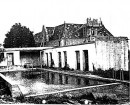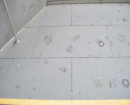Dorrington Estate Precinct
Dorrington Avenue GLEN IRIS, Stonnington City
-
Add to tour
You must log in to do that.
-
Share
-
Shortlist place
You must log in to do that.
- Download report
Statement of Significance
The Dorrington Avenue area developed as the result of the subdivision of three significant, nineteenth century properties, Bryanmawr, and Valentines, in Burke Road and Ranfurlie in Malvern Road. Today, the area comprises high quality interwar building stock punctuated by these nineteenth century, landmark buildings.
The subdivision was unusual in that it did not result in the demolition of these former grand homes but saw them redeveloped as educational institutions servicing the newly created residential areas. Two of the mansions remain as buildings of high historical and architectural significance. Valentines encapsulates the excesses and unrealised expectations of the property boom of the 1880s, while Bryanmawr is a fine example of an outer suburban homestead. These houses were associated with high profile politicians and businessmen, in particular Mr Justice Kerferd, Sir John Mark Davies and the Hon. William Knox. These former owneres and occupiers left a significant mark on Victorian politics and business. Locally, Davies, Knox and Kerferd Streets were named for these prominent and influential identities.
The area is also of significance for the quality and consistency of its residential housing stock and its integrity to its interwar state, the mature character of its street trees and gardens, and for its street layouts which reflect, in part, the landholdings of the earlier estates.
-
-
Dorrington Estate Precinct - Physical Description 1
The proposed Dorrington conservation area is bounded by Glenvale Road to the north, Wattletree Road to the south, Malvern Road to the east and Burke Road to the west. With the exception of Glenvale Road, each of these roads is a major suburban artery and the associated streetscapes are typified by high front walls and heavy screens of trees and shrubs. However, within this busy perimeter, lies a quiet suburb of substantial residences dominated by three prestigious schools in expansive grounds.
The perimeter roads are all constructed of bitumen with concrete footpaths and crossovers. The process of road widening to accommodate increasing traffic densities has seen original bluestone kerbs and gutters replaced in concrete in most locations, nature strips reduced to little more than a metre and mature trees replaced with young native species.
Within the boundary the character of the area is dominated by the three schools. On the western side of the area, Sacre Coeur Catholic Girls School addresses Burke Road from lofty red brick buildings drawing inspiration from Gothic sources. In the centre of the block, Korowa Anglican Girls School occupies a suite of buildings based around the site of the mansion. Ranfurlie. To the south, the Malvern Campus of Caulfield Grammar School operates from an impressive Italianate mansion dating from 1891.
Residential areas within the block are more serene than their counterparts on the perimeter. Roads are paved in bitumen but efforts have been made to conserve the original bluestone kerbs and gutters in most locations. Footpaths and crossovers are of concrete but nature strips are generous and well maintained with a mix of older trees and more recent native plantings. Fences are generally low and are constructed in a variety of materials including face and rendered brick, timber and hedges.
Individual houses are set in generous blocks with gardens that tend towards informality. Architecturally, they draw from the full range of stylistic influences available to the interwar builder and architect. Federation villas with complex Marseilles tiled roofs sit alongside the pointed Tudor and Old English style and low, hovering bungalows. The influence of Arts and Crafts ideas reverberate throughout the area in hung shingles, roughcast render and leadlight windows. A strong northern European influence is realised through Germanic helm roofs and habitable attic spaces that recall the Swiss Chalet style. The result is a liberated architecture in which details combine and recombine to create the lively eclectic hybrids which came to characterise the local building industry between the wars.
With the expansion of Korowa and Sacre Coeur through the post-war years, the character of these schools has become increasingly Modern. However, the residential portions of the block have generally retained their interwar flavour. New houses are rare and generally respect the scale and massing of their neighbours, although exceptions such as the large, Modern house at 6-10 Wiloby Avenue have a significant, detrimental effect on the surrounding streetscape. Similarly, extensions to existing dwellings generally work to reinforce the established character of the street, but again occasional unsympathetic first floor additions such as those at 8 Valley View Road, work to undermine the character of the area.
Dorrington Estate Precinct - Local Historical Themes
8.2.3 'The City of Real Homes' development of Malvern after World War 1
8.1.3 The end of an era - mansion estate subdivisions in the twentieth century
3.3.3 Speculation and land boomers - subdivision from 1880s onwards
8.1.2 'Seats of the mighty' -mansion estates in the nineteenth century
Heritage Study and Grading
Stonnington - City of Stonnington Heritage Overlay Report (Stages 1-5) 1998
Author: Bryce Raworth P/L
Year: 1998
Grading: Various
-
-
-
-
-
MALVERN HOUSE
 Victorian Heritage Register H0379
Victorian Heritage Register H0379 -
CENTRAL PARK CONSERVATORY
 Victorian Heritage Register H0908
Victorian Heritage Register H0908 -
16 Muswell Hill
 Boroondara City
Boroondara City
-
-









